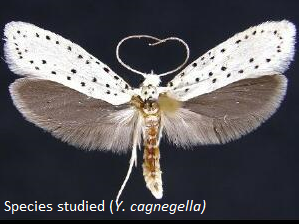We all know that moths are attracted to light because they think it’s the moon right? But what happens when you have a city and each of those lights are potentially death traps (bug zappers, hot incandescent lights etc.)? What will happen to the moths?
Well, it turns out that this creates a massive natural selection against moths attracted to light, so that moths who aren’t normally attracted to light have a higher survival rate. If the moths that don’t like light are the only ones surviving, then they’re also the ones breeding and their genes will be the ones that are passed on, creating a generation of moths that don’t like light.
That’s exactly what Swiss researchers have found. Moth larvae from city areas grew up to are a lot less likely to move towards any light sources than their country-side cousins. How damaging this is to the environment is not known, but one would assume that this adaptation will stop a lot of moths from dying to artificial lights.
This article is written and submitted by Damien Tsang, a Monash Science student. You can submit content to the Scapegoat email or click on “Submit Content” above for more information.



